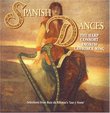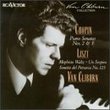| All Artists: Wolfgang Amadeus Mozart, Alicia De Larrocha Title: Mozart: Klaviersonaten Piano Sonatas Volume 3 K. 309, 310, 311, 330 Members Wishing: 0 Total Copies: 1 Label: RCA Release Date: 2/11/1992 Genre: Classical Styles: Forms & Genres, Sonatas, Historical Periods, Classical (c.1770-1830) Number of Discs: 1 SwapaCD Credits: 1 UPC: 090266045426 |
Search - Wolfgang Amadeus Mozart, Alicia De Larrocha :: Mozart: Klaviersonaten Piano Sonatas Volume 3 K. 309, 310, 311, 330
 | Wolfgang Amadeus Mozart, Alicia De Larrocha Mozart: Klaviersonaten Piano Sonatas Volume 3 K. 309, 310, 311, 330 Genre: Classical
I like some volumes of Alicia de Larrocha's Mozart sonatas very much and others a lot less. It probably has to do with my own mood rather than the pianist's, especially since the performances collected on this disc come fr... more » ![header=[] body=[This CD is available to be requested as disc only.]](/images/attributes/disc.png?v=a4e11020) ![header=[] body=[This CD is available to be requested with the disc and back insert.]](/images/attributes/disc_back.png?v=a4e11020) ![header=[] body=[This CD is available to be requested with the disc and front insert.]](/images/attributes/disc_front.png?v=a4e11020) ![header=[] body=[This CD is available to be requested with the disc, front and back inserts.]](/images/attributes/disc_front_back.png?v=a4e11020) |
Larger Image |
CD DetailsSynopsis
Amazon.com I like some volumes of Alicia de Larrocha's Mozart sonatas very much and others a lot less. It probably has to do with my own mood rather than the pianist's, especially since the performances collected on this disc come from three separate recording sessions. Nevertheless, the piano playing on this disc, admirable as it is, failed to move me. De Larrocha didn't stir my emotions with the grief-stricken music of K. 310, or the exquisite slow movement of K. 330. Maybe she's too subtle for me. --Leslie Gerber Similar CDsSimilarly Requested CDs
|
CD Reviews"Ms. Mozart" appropriate Mark Grinstein-Camacho | 03/20/2000 (4 out of 5 stars) "I bought this first because my grandmother liked the performer, and also because I was studying the Mozart piano sonatas. But what I got was a surprise: this CD is absolutely brilliant! Alecia de Larrocha plays exactly as if she knows what is happeining, either in the mind of the composer or the chord changes. The bright first and last movements of the sonatas are, if such can be said, sparkling and effervescent; although the slow, often sad second movements are played sort of limply rather than passionately, she focuses most on the chords here and saves the passion for the other movements, so that how the sonata is organised becomes quite visible. She has the fluidity of Evgeny Kissin, but the distinctness of Horowitz or Reubenstein; like Reubenstein, she decides which groups of notes to organise into fluid passages and which into resonating tones. Although I certainly agree with this editor thast the sonata in minor "fails to move," he was not appreciating the chord changes, which work the same way that the major-keyed sonatas work. This is one my favorite disks of my entire collection."
|

 Track Listings (12) - Disc #1
Track Listings (12) - Disc #1









